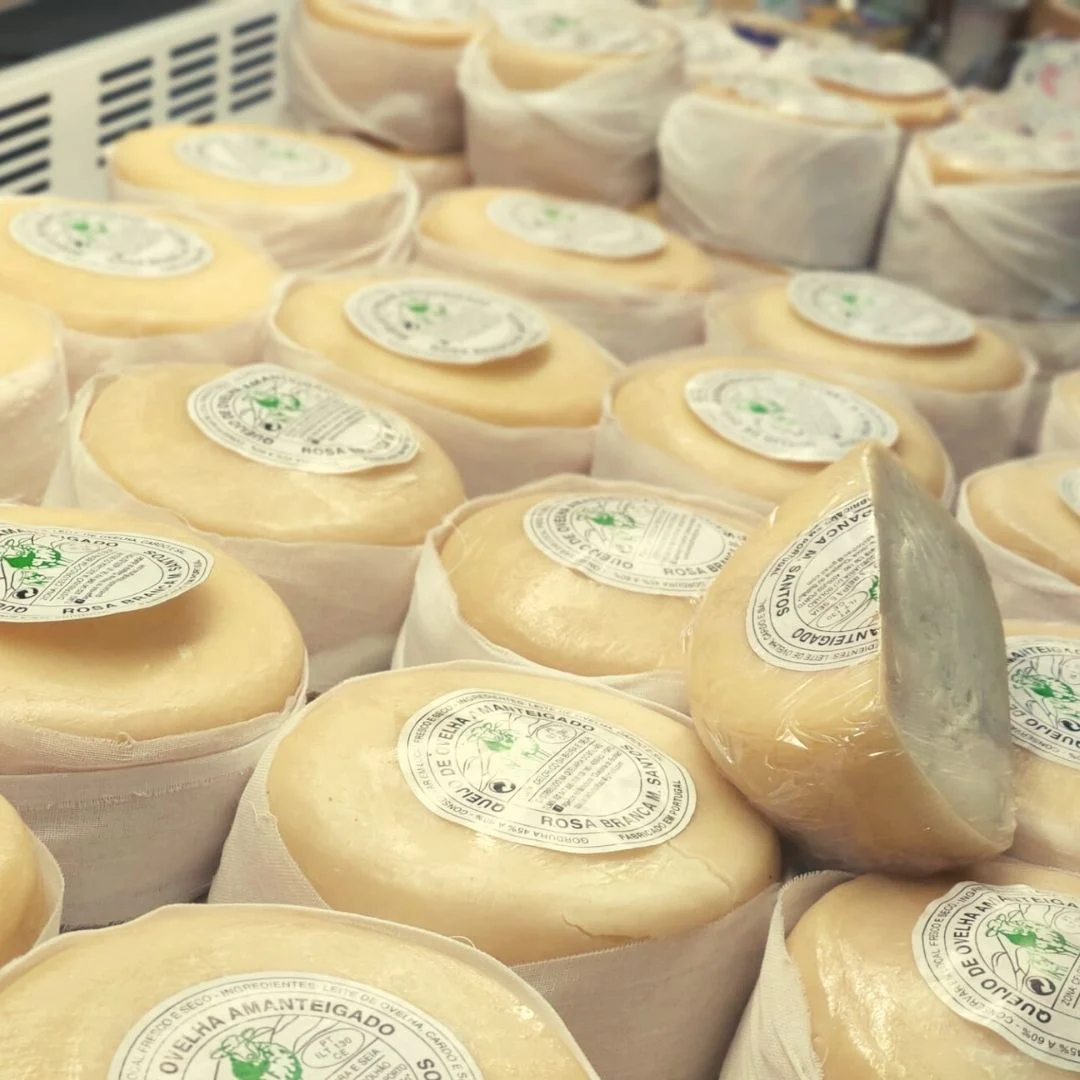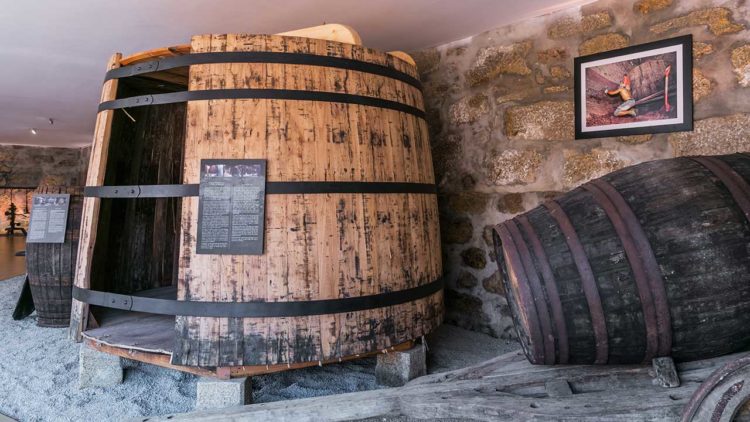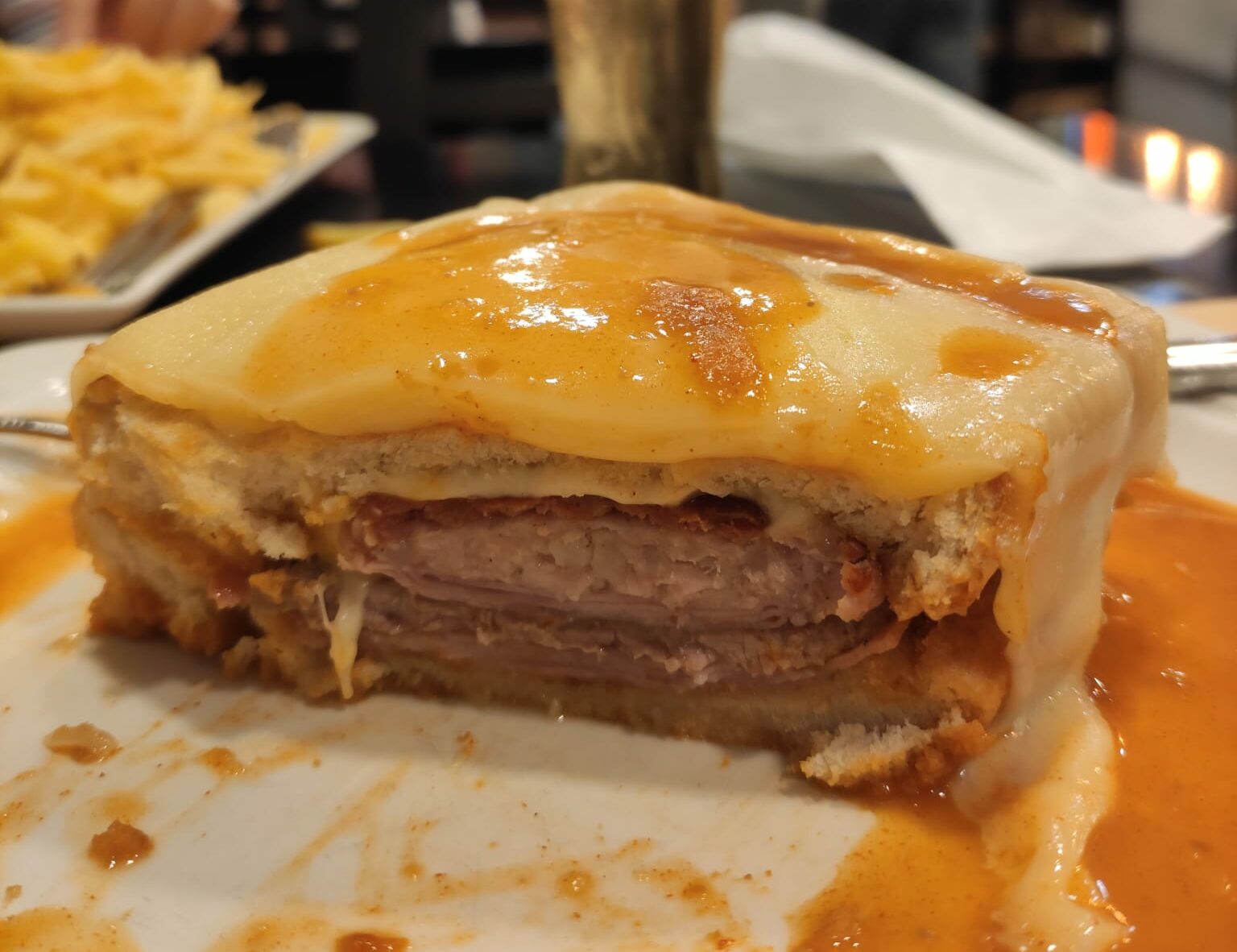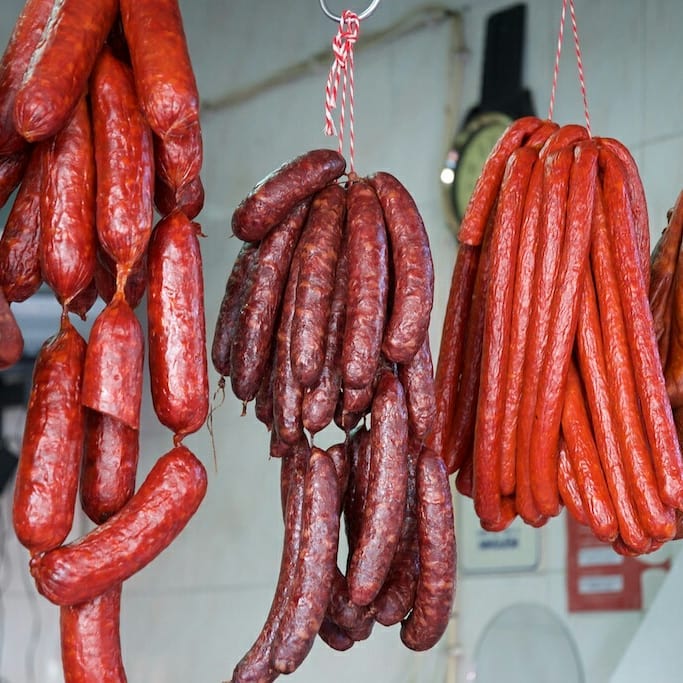
If you’d like to know more about Portuguese sausages and cured meat traditions, you’ve come to the right place. Today we’ll share with you 9 delicious marvels from Portugal that you need in your life. We invite you to take one of our Porto Food Tours if you want to sample some of these Portuguese sausages from one of the best charcuteries in town.
In this article, we’re going to cover 3 main topics:
- Enchidos & Fumados (that’s the correct expression)
- Portuguese sausage making for beginners
- Our top 9 favorite Portuguese sausages and cured meats
Enchidos & Fumados (that’s the correct expression)
The world of Portuguese sausages and cured meats is actually an immense multiverse full of gateways into different times, spaces, and realities. Even amongst the Portuguese, there is much unfamiliarity because some products are so region-specific that only the natives know about them. On the other hand, today’s aversion to animal odd bits and, at times, laws imposed by the EU, have reduced some products to absolute rarities and led others to extinction. The Portuguese call this multiverse enchidos & fumados. This expression translates into “Portuguese sausages”, which is annoyingly limitative. Its literal meaning is “stuffed and smoked items”:
- Enchidos are composed of a casing that is stuffed with something;
- And Fumados are all items that are smoked.
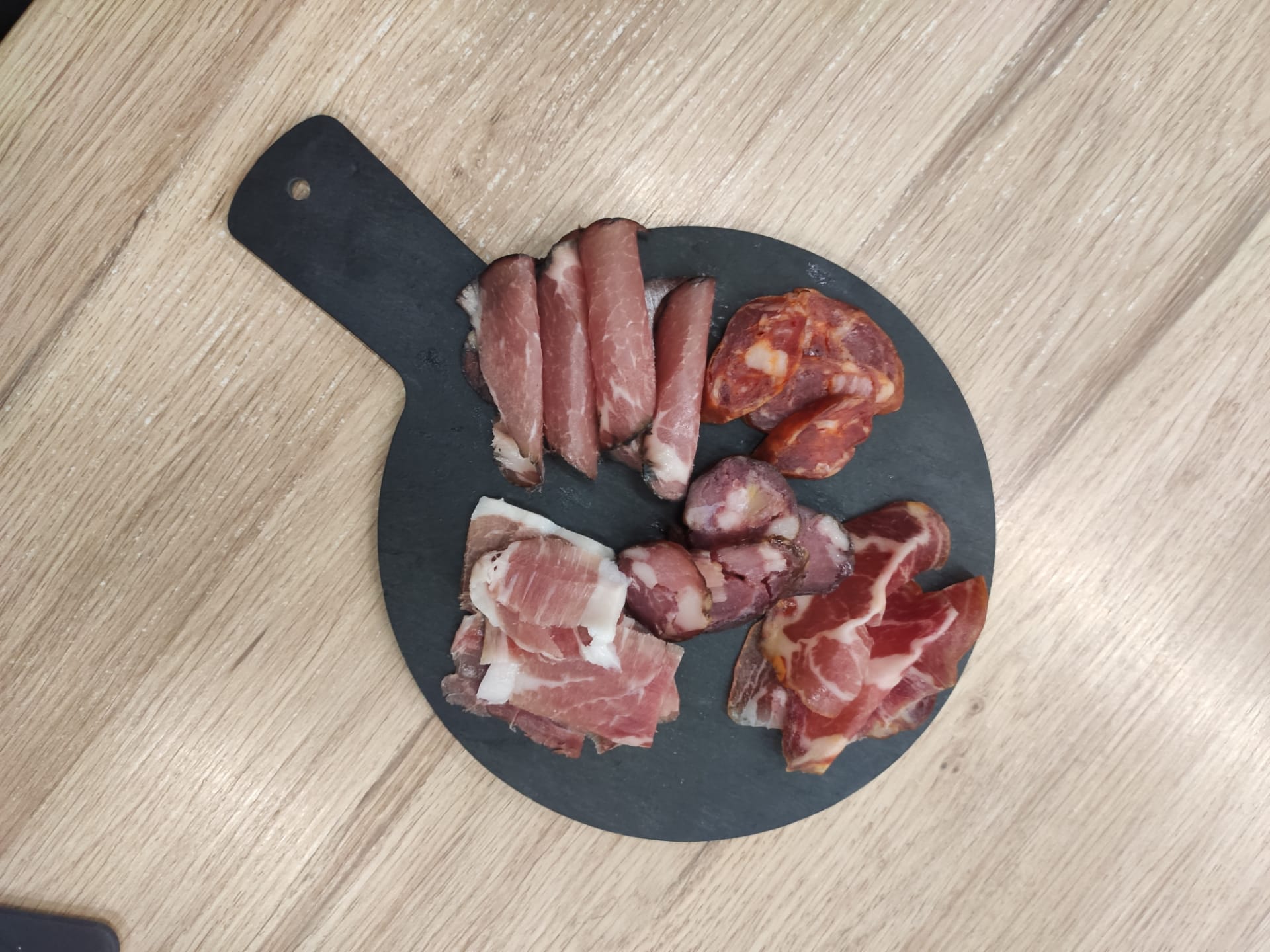
Our Spanish brethren understand this concept in such a similar way that their expression is the same – embutidos y ahumados – but let’s not duel on Iberian comparisons for this is the stuff that starts wars.
Modern refrigeration is a concept of the XIX century. Before this, meat was preserved using salt, spices, dry air, smoke… and prayer. It was the Celtic and Roman cultures that first developed this preservation technique in this part of the World, and it’s going to be the simplest people who are going to continue it. You see, worrying about having enough food to survive the winter, making the most of the animals in front of you, these are not concerns of the wealthy. It’s not a coincidence that our favorite dishes all come from the so-called traditional gastronomy, “the people’s food”. This is a world of simplicity and yet tremendous creativity, of humble ingredients cleverly combined and great knowledge and respect for Nature.
Portuguese sausage making for beginners
Speaking of ingredients, when it comes to Portuguese sausages, pork is the most important one. Up in the North of Portugal, the star is the Bísaro breed. These are big pigs that take longer to grow and are bred with great care. They are fed lovely things such as cabbages and chestnuts, fruit, acorn, cereal, potatoes, and the occasional leftovers. This makes for well-fed, happy animals which become very flavorful meat then treated with great skill. The pig is used in its entirety and nothing goes to waste.
You obviously have your nobler cuts but those don’t come into the Portuguese sausages multiverse in great quantity. It’s the offal or odd bits that reign. They go through a “gastronomic spa treatment” as they rest in salt, wine, garlic, paprika, bay leaf… and later are mixed in with flour, honey, bread, onion, herbs, rice – all depending on the region, the recipe, and the pair of hands at work. Finally, if the item is to be smoked, there’s a whole other world to look into: type of wood, temperature, location for the smoking, timings, weather.
In Portugal, we have enchidos & fumados from all over the country including our beautiful islands. The greatest quantity and diversity is found in the rugged, poorer, more humid North but our list of favorites does include a few “imports” from the south.
Our top 9 favorite Portuguese sausages and cured meats
ALHEIRA
Many stories have been told about the origin of alheiras, mainly associating them with the tribulations of the “secret Jews” after the rise of the Portuguese Inquisition, in the XVI century. These are just that: stories. Their origin is the same as all Portuguese sausages: they were born from the need to preserve meat. And when the pork ran short, other meats were added. That’s it! Stop making stuff up!! Alheiras are an absolute favorite in Porto. These days, you will find many variations to the dish and to the sausage itself, some bordering on the heathen!
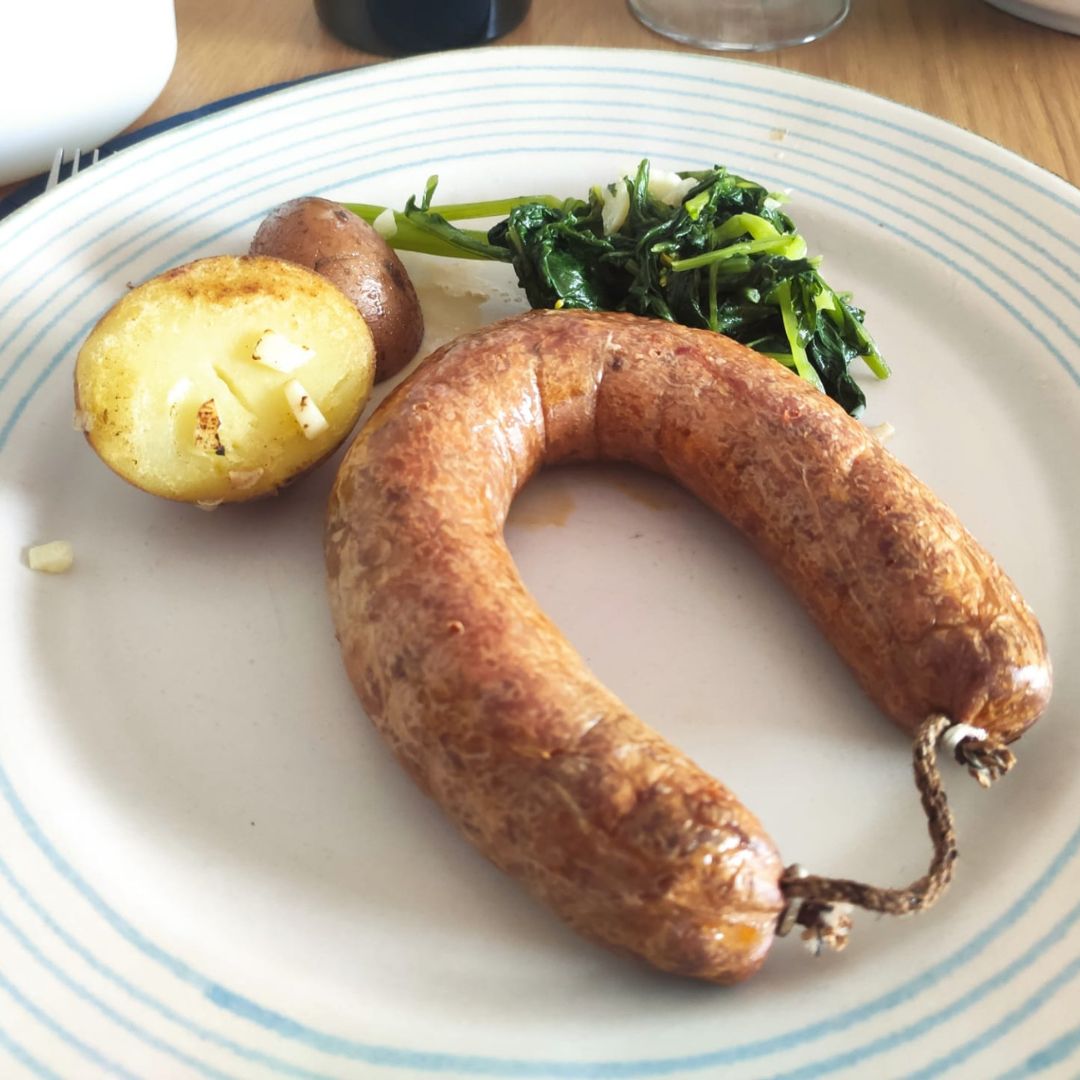
- Pork cuts: head, salted belly bacon, back bones, rind. These can be mixed with other meats such as chicken, veal, rabbit and game.
- Preparation: boiled with garlic, parsley and bay leaf. Old bread is soaked in this stew which is then shredded and seasoned with paprika and more parsley.
- Casing: hog’s (small intestine).
- Smoked: 5 days with oak or elm-tree wood plus 3 days for drying.
- Preferably served: oven-grilled or coal-roasted with boiled potatoes and turnip greens.
BARRIGA FUMADA
There’s always a piece of barriga fumada in the freezer at Mom’s. It’s the go-to item for flavor. To be perfectly honest, we think it should be considered a spice.

- Pork cuts: belly bacon.
- Preparation: soaked in water, salt, olive oil, paprika and pepper for 3 days.
- Smoked: 20-30 days with oak and chestnut wood plus 20 days for drying.
- Preferably served: “add to anything that needs help”, as one of the Taste Porto Moms would say.
CHOURIÇO
This is possibly the most widespread and versatile type of enchido in the country and there are numerous different versions: meat chouriço, onion chouriço, green chouriço, pumpkin chouriço, honey chouriço, rice chouriço… the list is endless. It’s commonly added to recipes to give that extra punch but it can also star on a cold meats board. It can be argued that one of the most commonly used is chouriço de carne (meat).
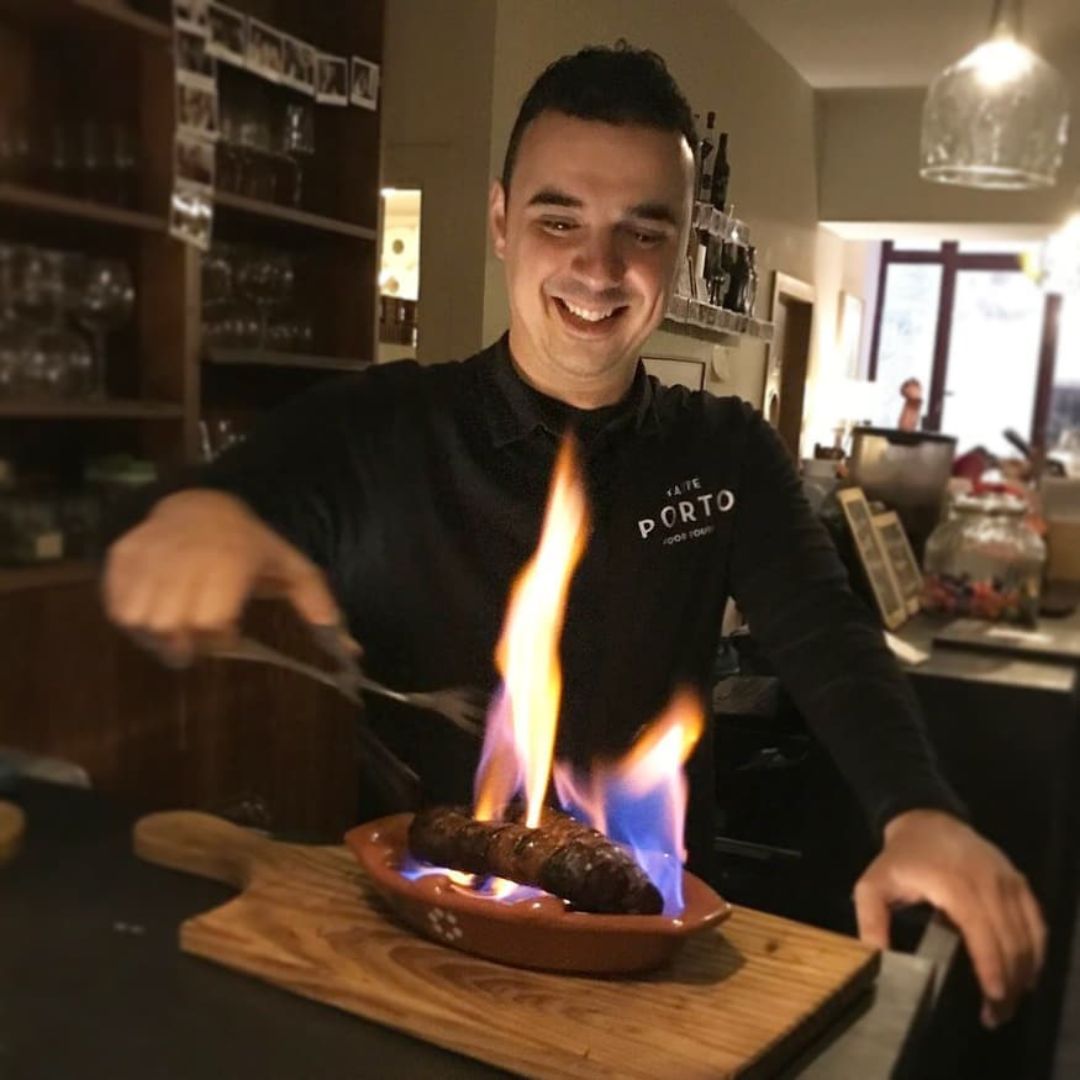
- Pork cuts: loin, neck and belly bacon.
- Preparation: marinated in salt, garlic, red vinho verde and bay leaf for 2-4 days. All is drained and seasoned with paprika which can be sweet, spicy or a mix of both.
- Casing: hog’s.
- Smoked: 10 days with oak wood.
- Preferably served: roasted in aguardente using a small clay roaster (a staple in any home).
LINGUIÇA
This is another “import” from the south, one that has made its way into some of Porto’s most beloved dishes such as “Francesinha” and “Pica-Pau”.
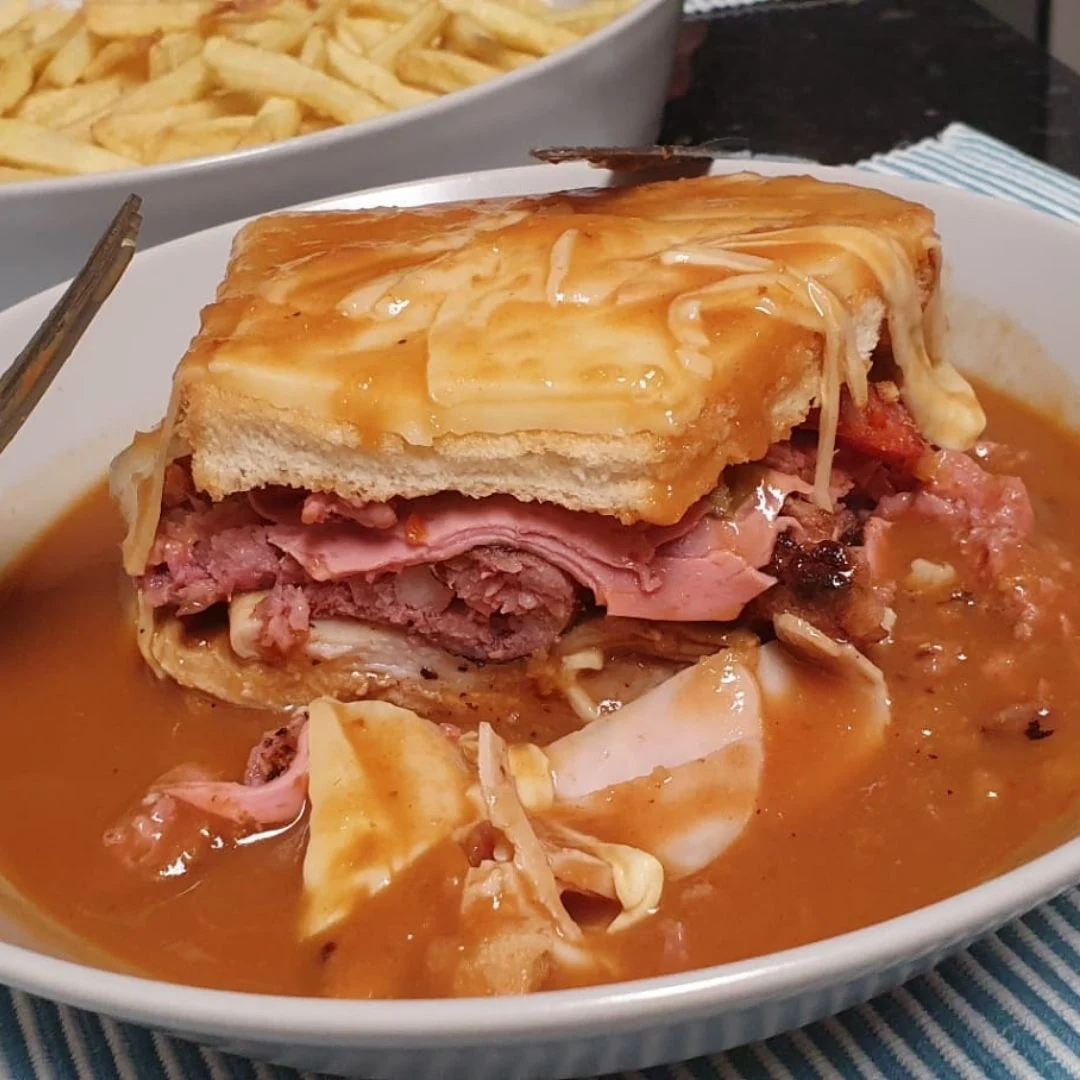
- Pork cuts: neck, shoulder and belly.
- Preparation: marinated for 3 days in water, white wine, garlic, salt and red pepper paste (can be spicy).
- Casing: hog’s.
- Smoked: 10 days with holm-oak wood.
- Preferably served: grilled.
MOIRA
The name may be telling us this Portuguese sausage is of southern origin, as it seems to evoke the moors, the Arabic-speaking people that invaded the Iberian Peninsula in 711. However, moiras are only produced in the north. They differ from morcela mostly because they have more spices and cure for longer.
- Pork cuts: bloody pieces of meat.
- Preparation: marinated for 3 days in vinha d’alhos (red wine, garlic, salt, cumin and chili pepper). Lard, blood and bone stock that’s been filtered through bread are added after.
- Casing: hog’s.
- Smoked: 6 days with any wood.
- Preferably served: oven-grilled or coal-roasted with arroz malandro with turnip greens, a typical rice dish that translates into “naughty rice” since, like a restless child, the great amount of sa(ss)uce does not allow it to sit still.
MORCELA
The center, south, and islands all produce morcelas. This enchido was clearly developed as a way to use the blood of the pig which is still believed to be very good for your health. There are many types of morcela but the basic recipe seems to be:
- Pork cuts: bloody pieces of pork meat and blood.
- Preparation: mixed with salt, water, garlic, cumin and paprika.
- Casing: hog’s.
- Smoked: 8 days with holm-oak wood.
- Preferably served: part of a stew; boiled or roasted with “naughty rice”.
FARINHEIRA
Although you can easily find this in our grocery stores and markets, the main recipes for this particular Portuguese sausage are from the center and south of the country. However, farinheira has a very well-established place in the hearts and stomachs of the north. Despite being an “import”, it is a mandatory presence in northern classics. These days, it has become very popular as stuffing (chicken, mushrooms, puff pastry, etc.) and as an addition to scrambled eggs.
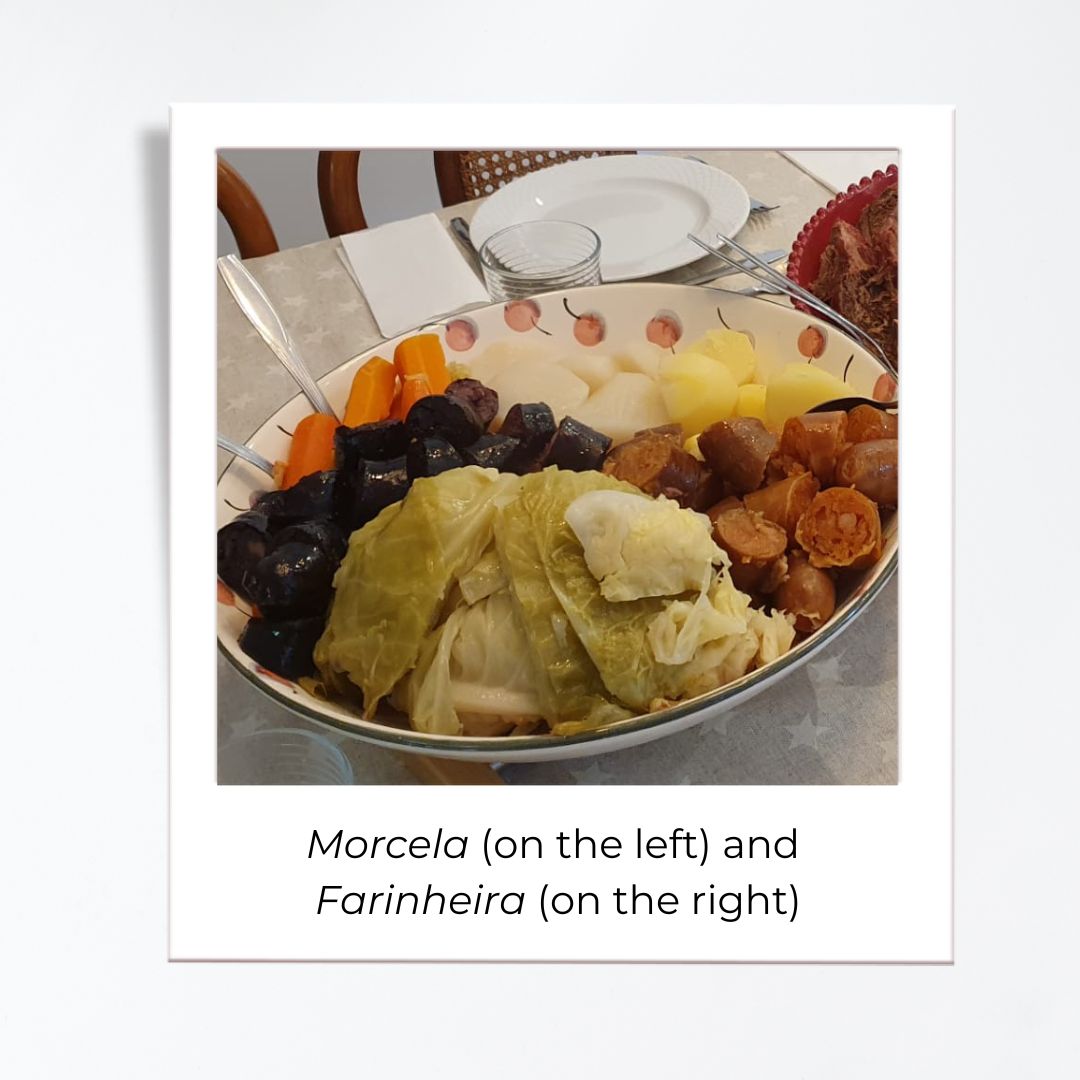
- Pork cuts: leftover meat, offal and fat.
- Preparation: marinated for 1-3 days in water, wheat flour (or bread), salt, garlic, capsicum, onion and pepper. If the farinheira has an orange color, that means those last three ingredients have been replaced with sweet paprika, orange juice and white wine.
- Casing: hog’s.
- Smoked: 3-10 with oak or holm-oak wood (timings vary a lot depending on recipe and region).
- Preferably served: as part of “Cozido à Portuguesa” (traditional stew).
PAIO
This is a very noble type of Portuguese sausage for it only uses pork loin. What a luxury! That’s why it’s more expensive than all the others on this list. For that reason, it’s sold in small pieces and chosen carefully for specific occasions.
- Pork cuts: loin.
- Preparation: marinated for 3 days in water, salt, garlic and red pepper paste.
- Casing: pig’s stomach fat.
- Smoked: 12 days with cork-oak wood after it was salted for 24 hours.
- Preferably served: on its own with some bread and olive oil on the side.
SALPICÃO
As chef Nuno Diniz puts it in his amazing book “Entre Ventos E Fumos” (page 53), salpicão is “the fine flower of smoked items”. This is yet another very noble enchido and a labor of love for it takes a long time to cure. A real treat!
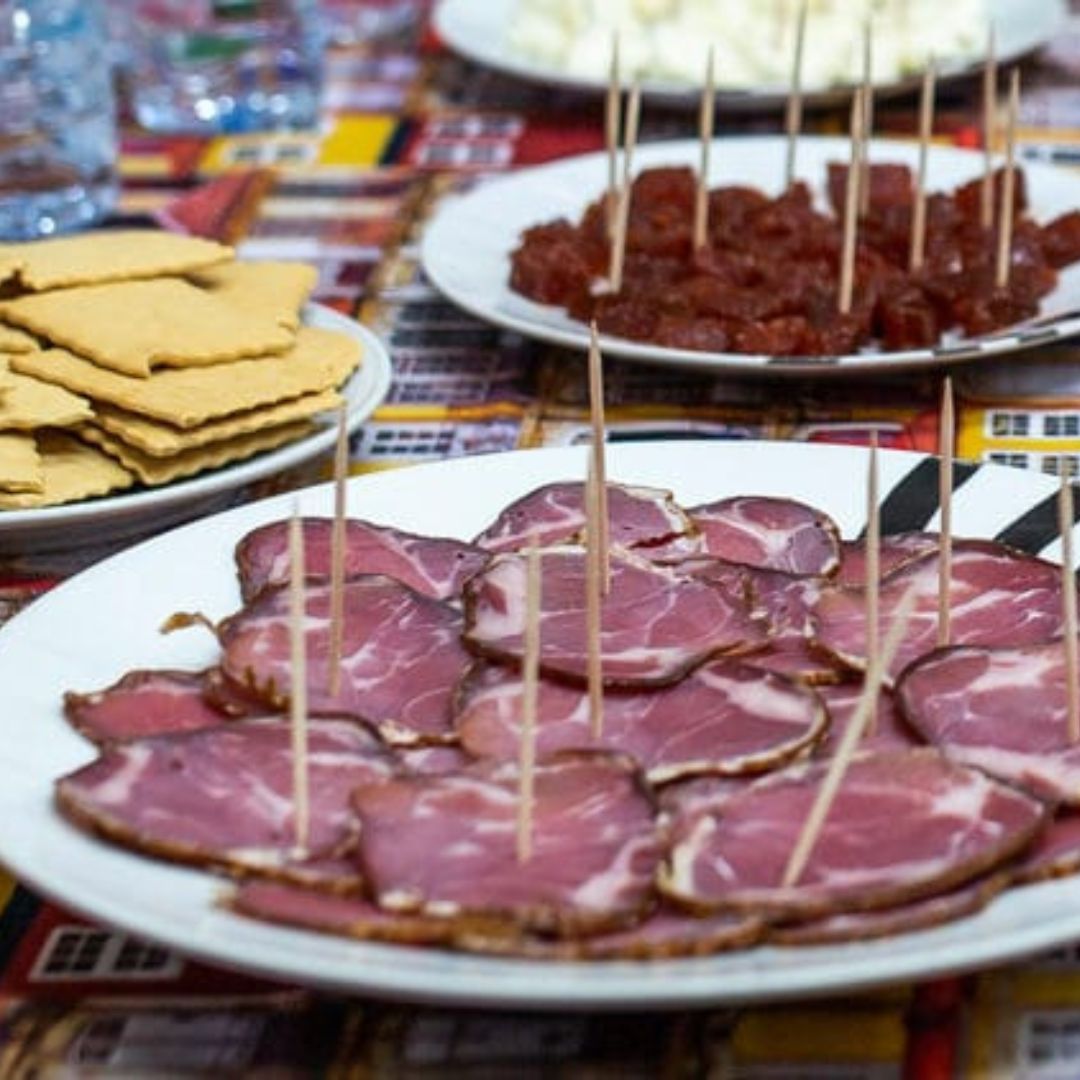
- Pork cuts: loin and tenderloin (totally trimmed of fat and cut into long chunks).
- Preparation: massaged and rested for 3-6 days in a paste made from salt, garlic, red or white wine, bay leaf and sweet or spicy paprika.
- Casing: chitlins.
- Smoked: softly for 25-30 days with oak wood and shrub.
- Preferably served: on its own or added to “Arroz de Pato” (duck rice).
Still curious? Hungry for more?
As you can see, whatever you want to call them – Portuguese sausages, enchidos & fumados, smoked delights – there is a reason why we address this as a multiverse. We talked about simplicity but there’s great complexity also. And there is much more beyond our top 9! In fact, we didn’t add that round number 10 because that one will have its own article – the presunto (Portuguese prosciutto) – so stay tuned.
Now that you have the theory, the next steps are obvious: book a ticket to Porto and come join us on one of our Porto Food Tours so you can put all this knowledge about Portuguese sausages into practice. From a 19th-century Portuguese deli to one of the best charcuteries in the city, we can guide you through this meaty journey and share with you our local chunks of wisdom.
We’re waiting for you!
Taste Porto Foodie Team
